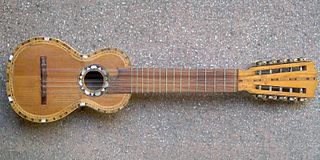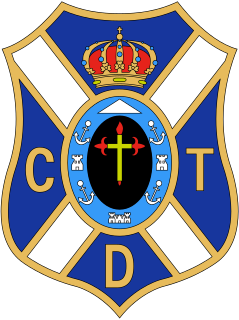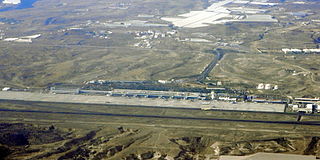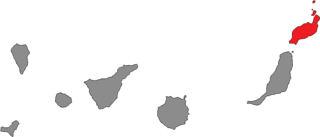The banjo is a stringed instrument with a thin membrane stretched over a frame or cavity to form a resonator. The membrane is typically circular, and usually made of plastic, or occasionally animal skin. Early forms of the instrument were fashioned by African-Americans in the United States, adapted from African instruments of similar design. The banjo is frequently associated with folk and country music, and has also been used in some rock songs. Several rock bands, such as The Eagles, Led Zeppelin, and The Allman Brothers, have used the five-string banjo in some of their songs. Historically, the banjo occupied a central place in African-American traditional music and the folk culture of rural whites before entering the mainstream via the minstrel shows of the 19th century. Along with the fiddle, the banjo is a mainstay of American styles of music, such as Bluegrass and old-time music. It is also very frequently used in traditional ("trad") jazz.

The Canary Islands, also known informally as the Canaries, is a Spanish archipelago in the Atlantic Ocean, in a region known as Macaronesia. At their closest point to the African mainland, they are 100 kilometres west of Morocco. They are the southernmost of the autonomous communities of Spain, and are located in the African Tectonic Plate. The archipelago is economically and politically European, and is part of the European Union.

The ukulele is a member of the lute family of instruments. It generally employs four nylon strings.

The charango is a small Bolivian stringed instrument of the lute family, which probably originated in the Quechua and Aymara populations in the territory of the Altiplano in post-Colonial times, after European stringed instruments were introduced by the Spanish during colonialization. The instrument is widespread throughout the Andean regions of Bolivia, Peru, Ecuador, northern Chile and northwestern Argentina, where it is a popular musical instrument that exists in many variant forms.

Tenerife is the largest and most populous island of the Canary Islands. It is home to 43% of the total population of the archipelago. With a land area of 2,034.38 square kilometres (785.48 sq mi) and a population of 917,841 inhabitants at the start of 2019, it is also the most populous island of Spain and of Macaronesia.

Lanzarote is a Spanish island, the northernmost and easternmost of the autonomous Canary Islands in the Atlantic Ocean. It is located approximately 125 kilometres off the north coast of Africa and 1,000 kilometres from the Iberian Peninsula. Covering 845.94 square kilometres, Lanzarote is the fourth-largest of the islands in the archipelago. With 152,289 inhabitants at the start of 2019, it is the third most populous Canary Island, after Tenerife and Gran Canaria. Located in the centre-west of the island is Timanfaya National Park, one of its main attractions. The island was declared a biosphere reserve by UNESCO in 1993. The island's capital is Arrecife, which lies on the eastern coastline. It is the smaller main island of the Province of Las Palmas.
The music of the Canary Islands reflects its cultural heritage. The islands used to be inhabited by the Guanches which are related to Berbers; they mixed with Spaniards, who live on the islands now. A variant of Jota is popular, as is Latin music, which has left its mark in the form of the timple guitar. There has been a strong connection with Cuban music, Venezuelan, Puerto Rican, and other Caribbean countries both through commerce and migration.

A tiple, is a plucked-string chordophone of the guitar family. A tiple player is called a tiplista. The first mention of the tiple comes from musicologist Pablo Minguet e Irol in 1752. Although many variations of the instrument exist, the tiple is mostly associated with Colombia, and is considered the national instrument.

Club Deportivo Tenerife, S.A.D. is a Spanish football club based in Santa Cruz de Tenerife, Tenerife, in the Canary Islands. Founded in 1912, it plays in Segunda División, holding home matches at the Estadio Heliodoro Rodríguez López, with a 22,824-seat capacity.

César Manrique was a Spanish artist, sculptor, architect and activist from Lanzarote.

Gran Canaria Airport, sometimes also known as Gando Airport, is a passenger and freight airport on the island of Gran Canaria. It is an important airport within the Spanish air-transport network, as it holds the sixth position in terms of passengers, and fifth in terms of operations and cargo transported. It also ranks first of the Canary Islands in all three categories, although the island of Tenerife has higher passenger numbers overall between the two airports located on the island.

Tenerife South Airport, also known as Tenerife South–Reina Sofía Airport, is the larger of the two international airports located on the island of Tenerife and the second busiest in the Canary Islands. It is located in the municipality of Granadilla de Abona and handled over 11 million passengers in 2018. Combined with Tenerife North Airport, the island gathers the highest passenger movement of all the Canary Islands, with 12,248,673 passengers, surpassing Gran Canaria Airport.

The Mexican vihuela[biˈwe.la] is a guitar-like string instrument from 19th-century Mexico with five strings and typically played in mariachi groups.
Benito Cabrera Hernández is a Canarian timple composer and virtuoso.
Tourism is an essential part of the economy of the Canary Islands, a Spanish archipelago located in the Atlantic Ocean, 100 kilometres west of Morocco. Seven main islands and six islets make up the Canary Islands. They had more than 9 million foreign incoming tourists in 2007. Tourists seeking sunshine and beaches first began to visit the Canaries in large numbers in the 1960s. The Canary Islands are a leading European tourist destination with very attractive natural and cultural resources.
The Divisiones Regionales de Fútbol in the Canary Islands are ultimately overseen by the Federación Canaria de Fútbol which operates Group 12 of the Tercera División, the fourth tier of the Spanish football league system which is divided among each of the country's autonomous regions. However, unlike most of the regions, the leagues in the fifth tier and below are organised by two separate federations, corresponding to the provinces of Las Palmas and Tenerife. The other regions with this arrangement are the Basque Country and the Balearic Islands which each have three provincial forks to its amateur setup.

The conquest of the Canary Islands by the Crown of Castille took place between 1402 and 1496. It can be divided into two periods: the Conquista señorial, carried out by Castilian nobility in exchange for a covenant of allegiance to the crown, and the Conquista realenga, carried out by the Spanish crown itself, during the reign of the Catholic Monarchs.

The Colombian tiple, is a plucked string instrument of the guitar family, common in Colombia where it is considered one of the national instruments. About three-fourths the size of a classical guitar, it has twelve strings set in four triple-strung courses. It is played as a main instrument or as an accompanying instrument to the guitar.

Lanzarote is one of the seven constituencies represented in the Parliament of the Canary Islands, the regional legislature of the Autonomous Community of the Canary Islands. The constituency currently elects 8 deputies. Its boundaries correspond to those of the island of Lanzarote. The electoral system uses the D'Hondt method and a closed-list proportional representation, with a minimum threshold of fifteen percent in the constituency or four percent regionally.
As in the rest of Spain, the majority religion in the Canary Islands is the Catholic Church. The Catholic religion has been the majority since the Conquest of the Canary Islands in the fifteenth century. This religion would largely replace the Canarian aboriginal religion through the prohibition of the latter and syncretism. According to a survey conducted in 2019, Canary Islands is the fifth autonomous community in Spain with the highest percentage of people who declare themselves to be Catholics after the Region of Murcia, Extremadura, Galicia, Aragon, and Castile and León. 76.7% of the population is Catholic.



















